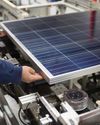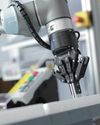How Medical Technologies Are Helping Ease The Pain
Innovation & Tech Today
|Fall 2019
Pain is part of what it is to be human. In many cases, pain is normal and necessary, helping to diagnose a problem or signaling to our bodies that it’s been exposed to something potentially dangerous.

To Feel Pain is Human
Pain is part of what it is to be human. In many cases, pain is normal and necessary, helping to diagnose a problem or signaling to our bodies that it’s been exposed to something potentially dangerous. But long-term pain, the kind of pain that persists beyond the time associated with natural healing, can leave a person feeling like there’s little to live for. The drug abuse epidemic that the United States is currently facing is fueled heavily by an overdependence of opioids, drugs legally prescribed by doctors to help treat this chronic pain.
Partly in response to the opioid epidemic, the management and treatment of chronic pain has become an increasingly popular medical specialty and subject of ongoing research. Pharmaceutical companies are actively researching non-addictive medications to replace opioid painkillers. However, these pharmacological treatments will likely still carry the stigma of opiates, as well as other potential side effects. Medical device and digital health companies have also developed several innovative approaches to managing chronic pain without the addictive properties or side effects of drugs.
Why Does it Hurt?
To understand how pain management technologies work, it might help to briefly see how the sensation of pain is transmitted through our bodies. We feel pain when some of the millions of sensory neurons in our body are stimulated or even damaged. The pain signal travels from these neurons to a section of the spinal cord called the dorsal horn. If the pain signal exceeds a certain threshold (by touching a hot stove versus a warm coffee mug, for example), the dorsal horn transmits the pain signal up to the brain, and the body reacts accordingly. Pain treatment works by either blocking the pain signals transmitted to the brain or by masking them with other signals.
Diese Geschichte stammt aus der Fall 2019-Ausgabe von Innovation & Tech Today.
Abonnieren Sie Magzter GOLD, um auf Tausende kuratierter Premium-Geschichten und über 9.000 Zeitschriften und Zeitungen zuzugreifen.
Sie sind bereits Abonnent? Anmelden
WEITERE GESCHICHTEN VON Innovation & Tech Today

Innovation & Tech Today
Acting and AI
Hollywood Legend William H. Macy on the Challenges of Quickly-Changing Technology
15 mins
Volume 9 / Issue 4

Innovation & Tech Today
New Mexico: A Rising Tech Hub
Explosive Growth Driven by Strategic Investments and Innovation
2 mins
Volume 9 / Issue 4

Innovation & Tech Today
Robots and Space Exploration
From Mars Rovers to Beyond
3 mins
Volume 9 / Issue 4

Innovation & Tech Today
Charting New Territories
The Beginning of Robotization with Cobots
2 mins
Volume 9 / Issue 4

Innovation & Tech Today
AI and Design
Is The Art World Embracing Al?
3 mins
Volume 9 / Issue 4

Innovation & Tech Today
Behind the Scenes of the Netflix Film Spaceman
Exclusive Interview with Director John Renck
4 mins
Volume 9 / Issue 4

Innovation & Tech Today
Autonomous Robotics
Are Delivery Bots Getting Bigger?
2 mins
Volume 9 / Issue 4

Innovation & Tech Today
A World of Limitless Innovations
The Next Big Things In Consumer Tech—Direct From McHenry, Illinois
4 mins
Volume 9 / Issue 4

Innovation & Tech Today
The Rise of Smart Home Furniture
Merging Comfort With Technology Like Never Before
2 mins
Volume 9 / Issue 4

Innovation & Tech Today
The Next Generation of Smart Homes
A Glimpse into the Future of Residential Tech
4 mins
Volume 9 / Issue 4
Translate
Change font size

